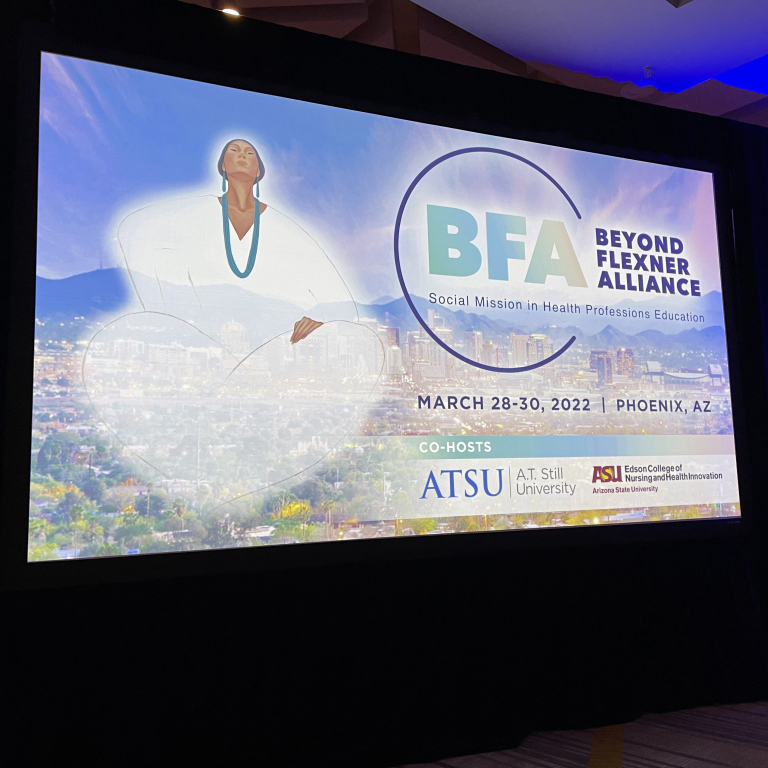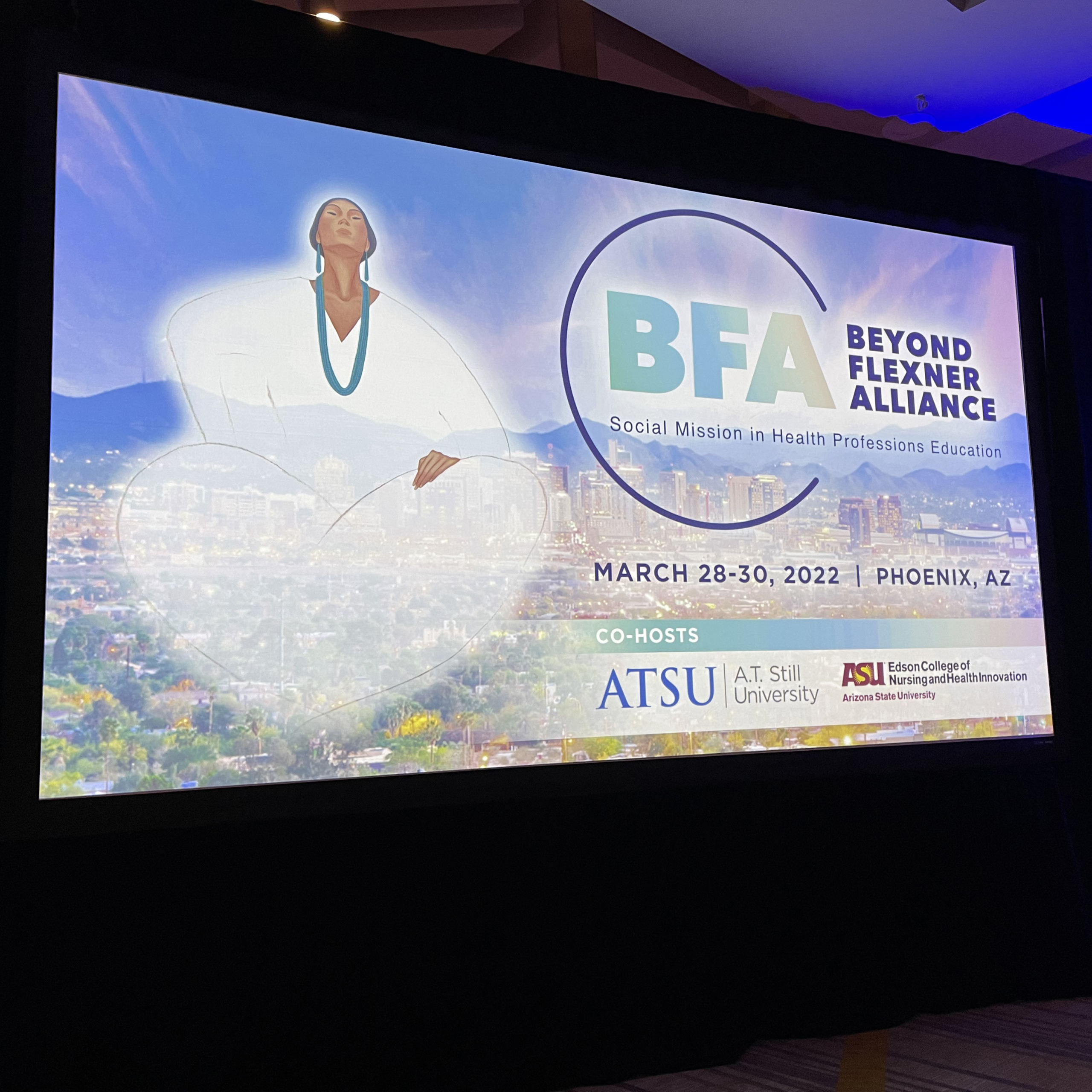Beyond Flexner Conference continues, aims to address needs of underserved communities
Posted: March 29, 2022
The 2022 Beyond Flexner Conference, co-hosted by A.T. Still University (ATSU) and Arizona State University’s (ASU) Edson College of Nursing and Health Innovation, continued Tuesday at the Hyatt Regency in Phoenix.
This year’s interprofessional forum is titled, “Moving the dial on social mission: Ensuring health professions education meets the challenges of today.” The three-day event will feature keynote speeches and breakout sessions, gathering leaders with a goal to bring about meaningful change.
Read below for highlights from Day 2. For a complete schedule of conference speakers and sessions, visit flexnerconference.org/program. Click here for highlights from Day 1.
Kim Perry, DDS, MSCS, FACD, associate professor, associate vice president university strategic partnerships, ATSU, on Beyond Flexner Conference inspirations…
“We also heard that our voice and our vote matters if we’re going to make a difference in the lives of others. The breakout sessions…and the (research) posters demonstrated meaningful scholarly ways that you are moving the dial to include advances in vaccine research.”
Keynote speaker Kenya Beard, EdD, AGACNP, CNE, ANEF, FAAN, associate provost, social mission & academic excellence, Chamberlain University
On questions educators must face…
“Are we priming students for bias? As educators and administrators, what, if anything, have we failed to face with our curriculum? Are we providing future providers with broader narratives?”
On eliminating racial bias in health professions curriculum…
“I remember sitting in the classroom and hearing time and time again, ‘If you are Black, you are more likely to have hypertension. If you are Black, you are more likely to be obese.’ What does that do to a student…what does that do to a 17 year old, hearing this narrative over and over? It was demoralizing, especially when there are only two or three people who look like you in the classroom, and whenever the teacher says anything that has to do with ‘Black,’ people get quiet and they look.”
On serious discussions on where to put resources to move the needle on health equity…
“What is in that gap? Is it the social determinants of health? Should we be working on that? Yesterday, we heard about the political determinants of health. Should we be focusing on that? I’ve asked colleagues to tell me, should we be focusing on what’s inside that gap, or should we be building a bridge to cross over? What do you think? Some will say, ‘We don’t know how deep that gap is, and if we have the resources to go all the way down to the bottom of that gap and address it.’ Or do we build a bridge knowing that the gap could widen, and then how stable would the bridge be?”
On eliminating racial bias from data and statistics…
“It’s always easier to blame the patient or the system. It takes a certain degree of humility to be able to say, ‘I, too, am part of the problem, because I, too, have looked at outcomes and made those assumptions.’ But when you know better, you do better.
“Just imagine if we stratified data based on hair color or height, and we started telling our colleagues, ‘Did you notice all of the students with blonde hair weren’t able to pass the exam?’ We’d be in an uproar. People would be outraged, the same way you can say, ‘Black people fail the boards.’ Correlation does not equal causation, and we should know better.”
Gary Cloud, PhD, MBA, vice president university partnerships, ATSU
On ways in which underserved communities are created…
“With normal curves of society, out on the edge you have rich and poor, in the middle you have most everybody else. Educated and uneducated, young and old, but most are in the middle. When a society loses its educated, wealthy, working-age folks, it doesn’t have the social infrastructure to support itself. So, around the world and in the U.S., when you have an underserved community, it has to do with the ‘brain drain.’”
On ways ATSU is working to keep providers in underserved communities…
“In Hometown Scholars, we ask the nation’s health centers and clinics to tell us who ought to be going to school, who ought to be tomorrow’s physician, dentist, physician assistant, and other professions for which ATSU offers programs. Also, we have a strategy of infusing talent into communities by moving to learning in place. Each new program we’ve started has a stronger version of learning in place, with the intent of infusing talent into communities. Today there are under contract 49 community health centers, from Hawaii to New York, where we have miniature schools going on, where some piece of the education is taking place. If you tie those two together, these health centers are in a position to say, ‘Here are the students in our community who have the right heart to come back and serve, and they are going to stay right here and learn for a piece of or, eventually we hope, all of their education.’”
